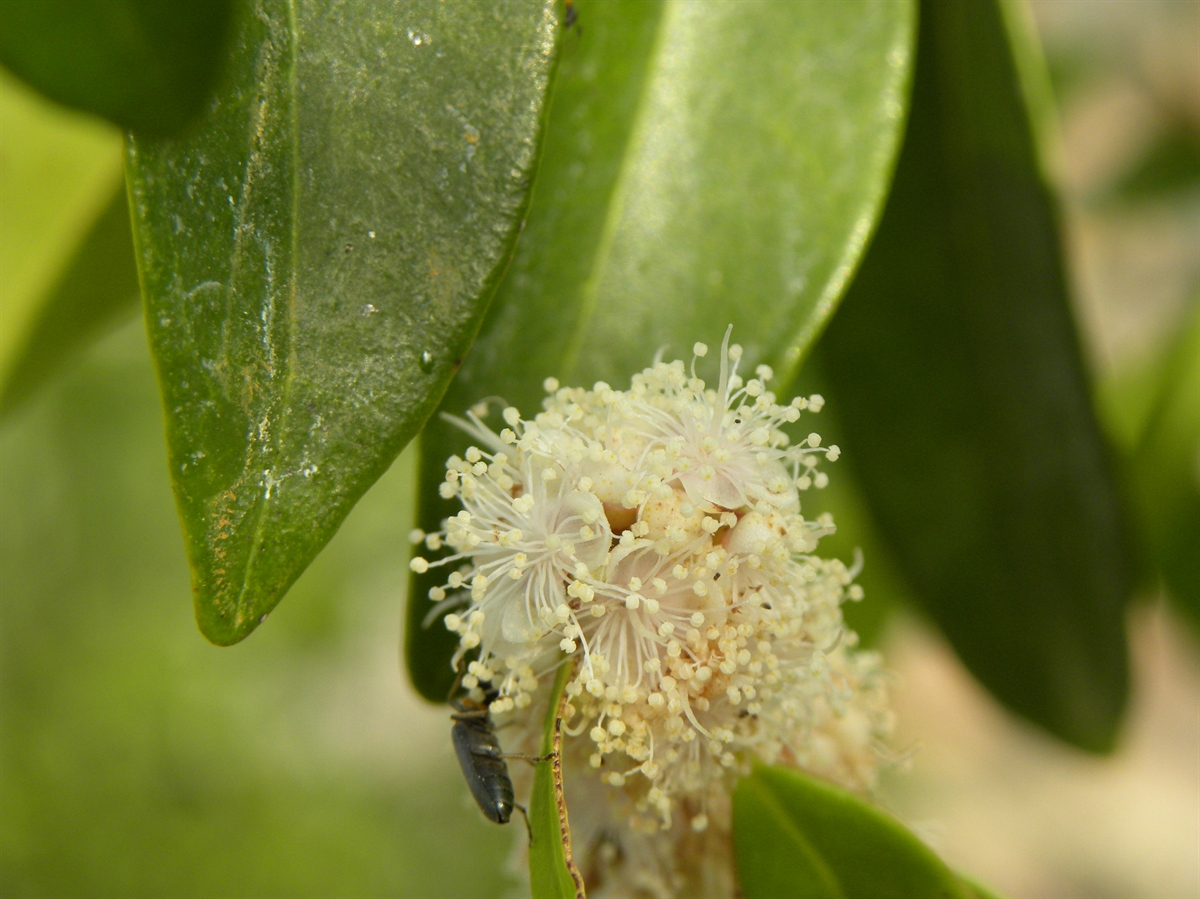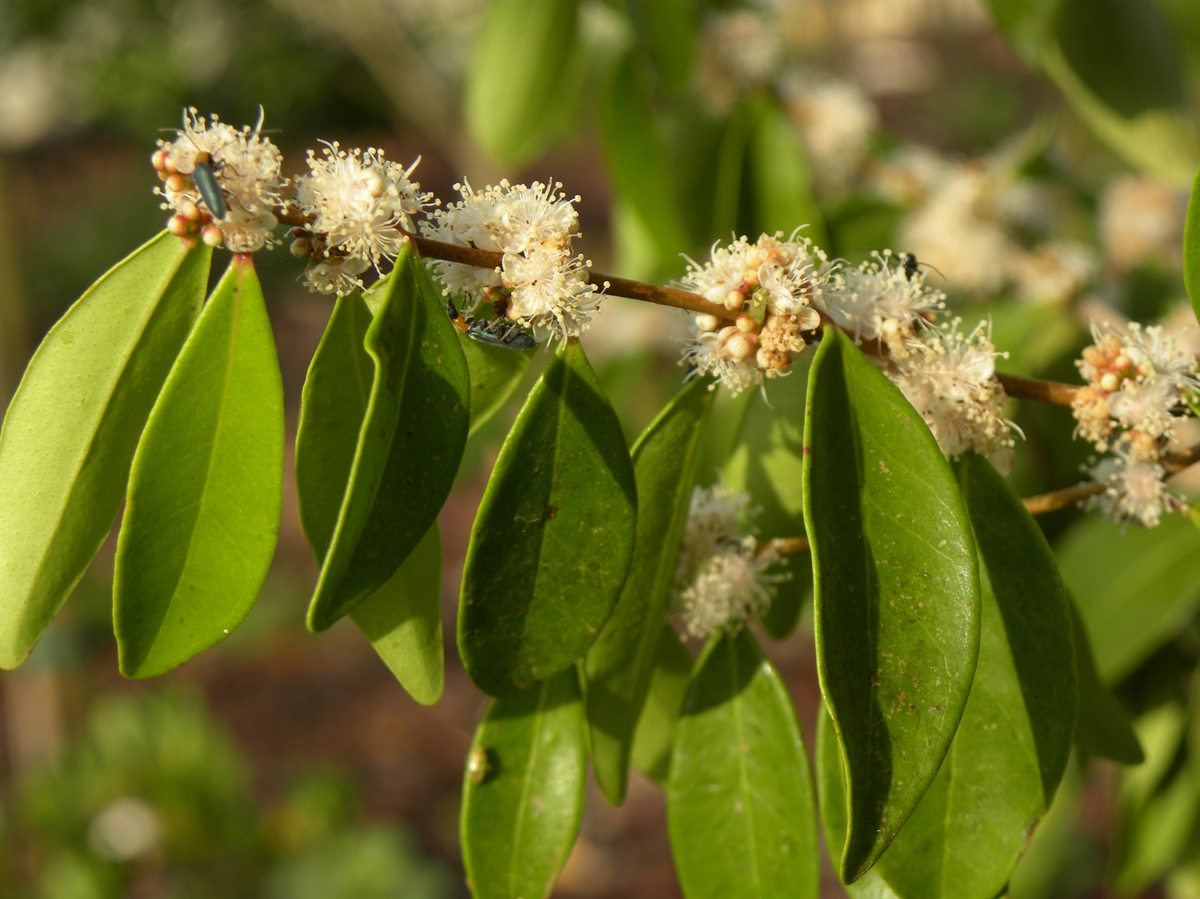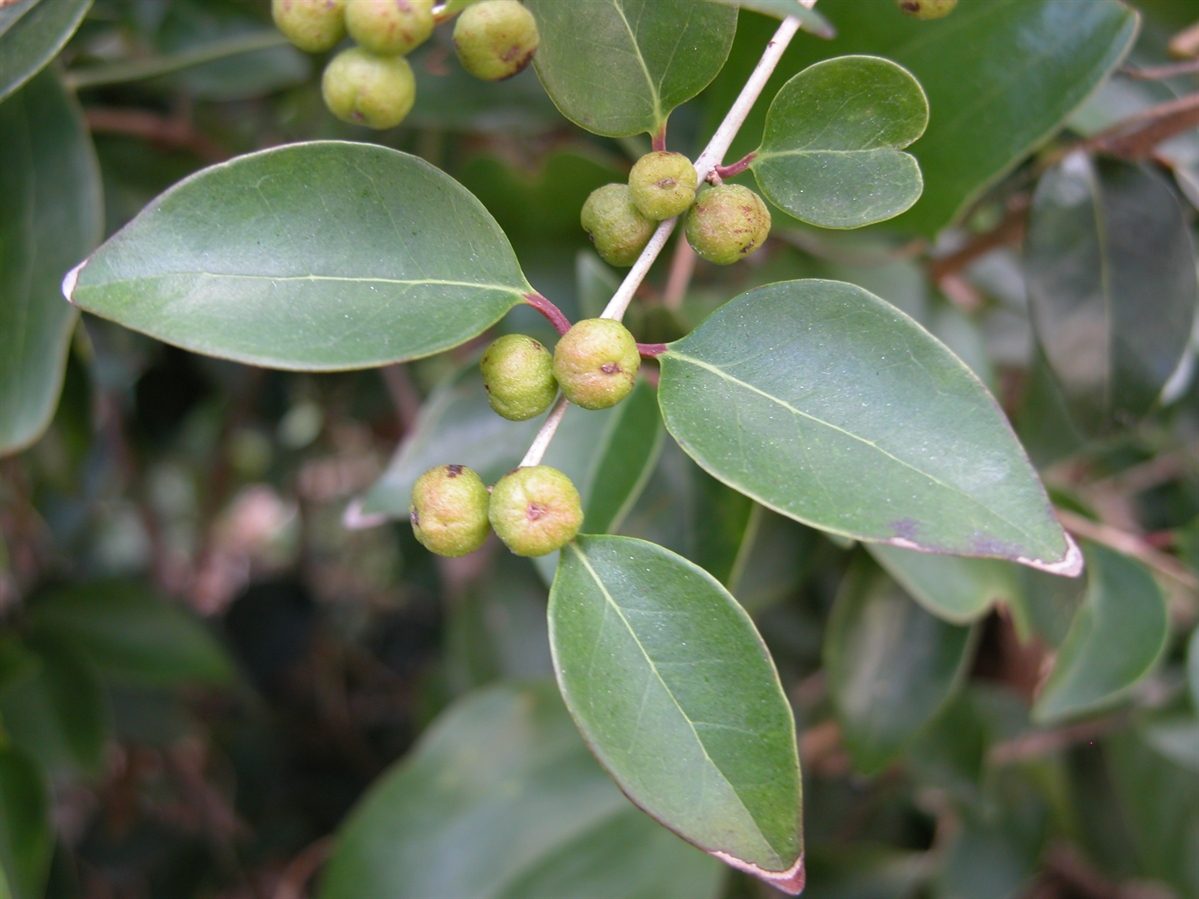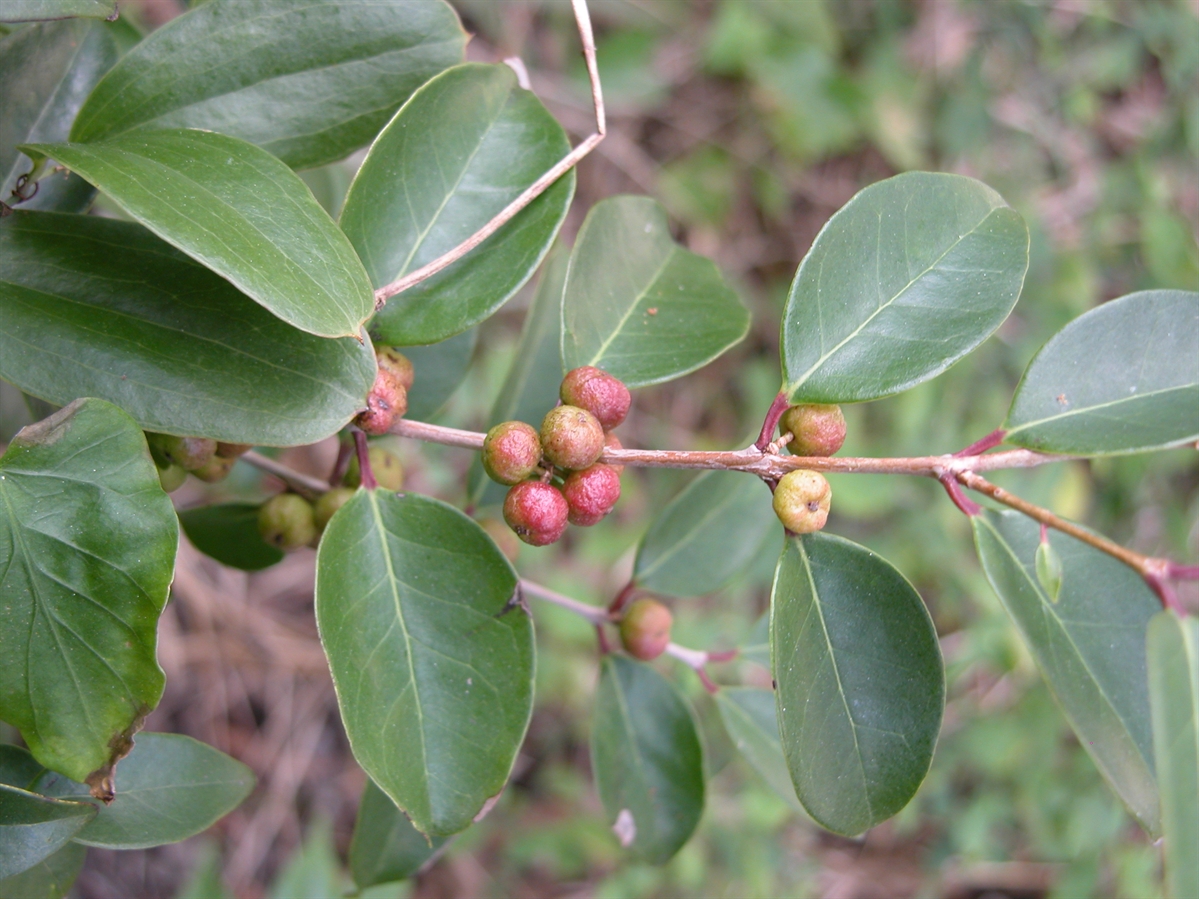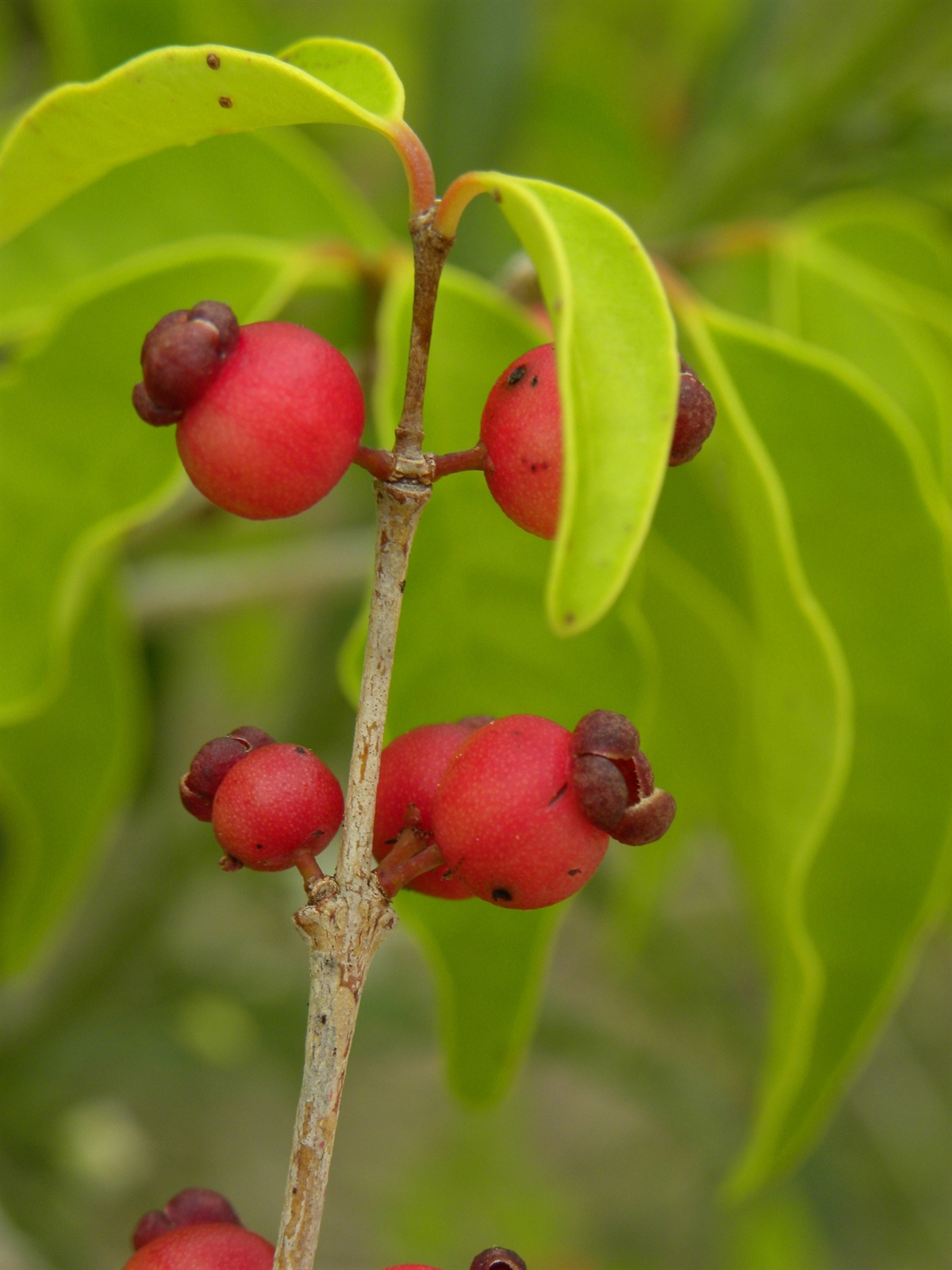Habit: Eugenia axillaris grows as a large shrub to small tree up to 9 meters in height with a trunk to 30 cm in diameter. The leaves are arranged oppositely, to 8 cm in length, ovate to elliptic with an acuminate leaf apex and entire leaf margin. The petioles are a red color as well as are the young developing leaves. The leaves have very faint pellucid-punctate dots and will release a menthol type odor when crushed.
The complete, prefect, actinomorphic flowers are arranged in short racemes in the axils of leaves. The calyx has 4 green unfused sepals. The corolla has 4 white unfused petals. There are numerous stamens. The ovary is inferior with 2 locules and numerous seeds. The fruit is a berry that turns reddish black at maturity.
Habitat: Eugenia axillaris grows in Dry Broadleaf Evergreen Formations – Forest/Woodlands/Shrublands/Dwarf Shrublands (coppice- all types).
Distribution: Eugenia axillaris occurs on all island groups in the Lucayan an Archipelago as well as Florida, the Caribbean region and Mexico south to South America.
Medicinal/Cultural/Economic usage: Eugenia axillaris is used in the Lucayan Archipelago to treat gastrointestinal problems (diarrhea), respiratory issues, and pain, as well as general strengthening teas for men and a bathing solution for women.
The fruits are sweet and edible when ripe.
Eugenia axillaris is part of the horticultural industry and is great for attracting birds.
